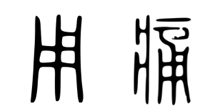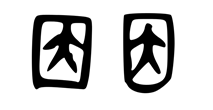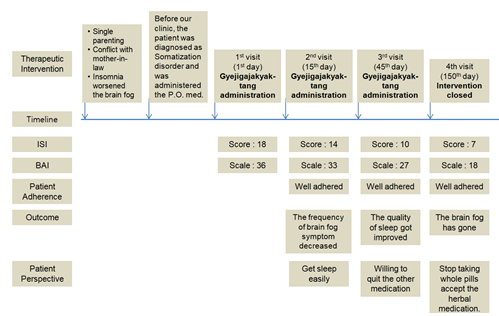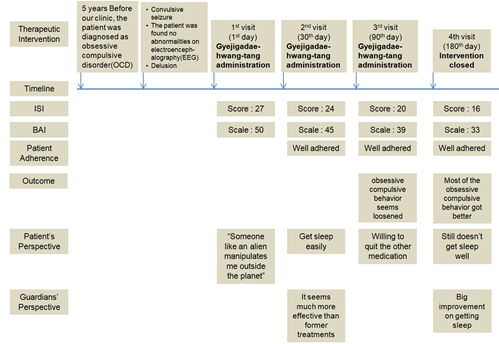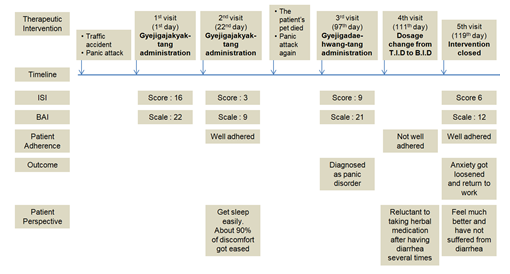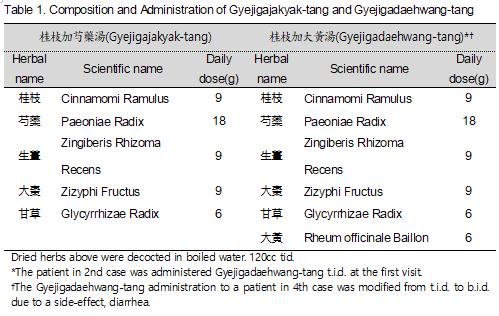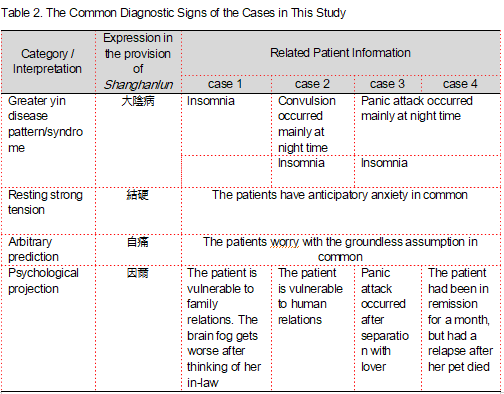Objectives :This study aimed to suggest distinct signs of Greater yin disease (tàiyīnbìng, 太陰病) by researching the etymology of three terms: zi-tong (自痛), jie-ying (結硬), and yin-er (因爾), which are exclusive found only in Greater yin disease (太陰病) in Gangpyeong-shanghanlun, but not in other categories.
Methods :We studied the etymologies of the three terms that are unique in Greater yin disease, then found some pathological signs that are related with them through the four mental illness cases, which include somatization, obsessive-compulsive behavior, delusion, and panic disorder.
Results : Based on the definitions of each term, we diagnosed the four patients who had mental illnesses as having Greater yin disease, and we observed meaningful improvements after administering herbal medication. After Gyejigajakyak-tang administration, the Insomnia Severity Index (ISI) score decreased from 18 to 7 and the Beck’s Anxiety Index (BAI) score decreased from 36 to 18 in the first case, the ISI score decreased from 27 to 16 and the BAI score decreased from 50 to 33 in the second case, and the ISI score decreased from 23 to 4 and the BAI score decreased from 34 to 5 in the third case. In the last case, the ISI and BAI scores were 16 and 22, respectively, at the first visit, and it was found that the scores had changed to 6 and 22,
respectively, at the last visit.
Conclusions : We found that the unique terms in Greater yin disease, including zi-tong (自痛), jie-ying (結硬), and yin-er (因爾), can be interpreted as groundless arbitrary assumption, resting strong tension, and psychological projection based on the etymological hypothesis. Therefore, we suggest these as specific signs of Greater yin disease.
Key words : Greater yin disease (太陰病), GangpyeongShanghanlun (康平傷寒論), Shanghanlun provisions, Etymology, somatization, panic disorder

